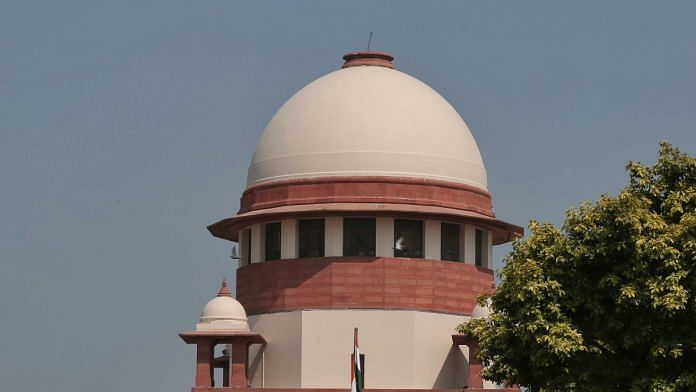New Delhi: The Narendra Modi government Thursday blamed the judiciary for increasing vacancies in high courts, as the Centre provided its analysis to the Supreme Court on reasons for non-filling up of judicial posts.
According to the government, which came under attack from the Supreme Court recently for defying the Memorandum of Procedure (MoP), several high courts had violated the set of guidelines for judicial appointments by failing to forward names six months before a post goes vacant, as mandated in the MoP.
A bench led by Justice Sanjay Kishan Kaul, before whom the Centre submitted its status report on steps it has taken to process judicial appointments, however, did not appreciate this “blame game”. But it also admitted delay on the part of high courts in proposing names of suitable candidates.
At the same time, the bench added that it was becoming difficult for high courts to appoint qualified lawyers since many refused to come forward for elevation due to the prolonged delay in judicial appointments.
At present, there are 332 vacancies in high courts whereas only 146 recommendations have been made, while there are no proposals for the remaining 56 per cent vacancies. High Courts of Chhattisgarh, Jharkhand, Meghalaya, Sikkim and Tripura have not recommended names for vacancies existing in the lawyers category for five years or more.
High Courts in Allahabad, Andhra Pradesh, Bombay, Calcutta, Delhi, Gauhati, Gujarat, Himachal Pradesh, J&K and Ladakh, Karnataka, Kerala, Madhya Pradesh, Orissa, Patna, Punjab & Haryana, Rajasthan and Telangana did not recommend names for vacancies from the Bar for one to five years, the status report submitted.
Moreover, high courts have not processed names for a total of 43 judges who would be retiring between December 2022 and May 2023. According to the government, all high courts should have by now sent recommendations for 229 vacancies, including 43 prospective ones.
Also read: 9 yrs, 133 hearings & counting — a Ranchi man’s case exemplifies endless delays in NIA trials
‘High rate of rejection by Supreme Court’
The government also blamed the high rate of rejection by the Supreme Court for vacancies in high courts.
According to the MoP, the HC collegium, led by its chief justice and two senior most judges, sends a proposal to the Centre as well as the Supreme Court collegium. On receiving the proposed names, the Centre carries out a background check on candidates via the Intelligence Bureau.
The government then forwards the inputs gathered to the apex court collegium for its consideration. Based on these inputs, the collegium takes a decision and then forwards its resolution approving the names to the government for a formal notification. The MoP allows the government to return the files in case it has objections over the cleared names. But on a reiteration, the Centre has no choice but to appoint the judges, states the MoP.
According to the government’s status report, the Centre made 165 appointments in 2022. These were out of the 221 recommendations that were sent by various high courts. The remaining 56 proposals were rejected by the Supreme Court collegium, the status report submitted. While 32 have been remitted back to the high courts, 24 are yet to be.
“The rate of rejection of names recommended by the high courts at Supreme Court level is 25 per cent, which is very high. As mentioned above, for 56 per cent vacancies, names are yet to be recommended by the high courts and out of names recommended by the high court collegium, approximately 25 per cent names are rejected at the level of Supreme Court collegium,” noted the Centre’s status report.
The report added that the high rate of rejection by the top court collegium “also contributes” in filling up only one-third of vacancies.
Justice Kaul’s bench took a dig at the Centre for objecting to the Supreme Court’s rejection, saying, “If you reject it is scrutiny, but if we do it then it causes delay.”
The government further brought on record the names it has cleared this year, including those that were reiterated by the Supreme Court collegium, through deliberations with the previous Chief Justice of India.
The government was seized of 36 reiterated names. “With a view to move further, Government of India had deliberations with the then CJI, which resulted into appointment of 24 recommendees as high court judges, two were remitted back to the high courts,” the report noted.
At present, files of 10 reiterated names are pending with the top court collegium. These files are part of the 19 names that were returned to the Supreme Court on 25 November for reconsideration. The remaining nine names are of those who were recommended for the first time.
Also read: 1 yr on, Modi govt still waiting for SC’s reply on appointing retired judges to HCs as ad hocs



